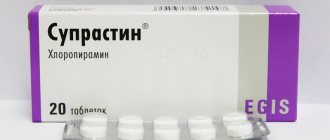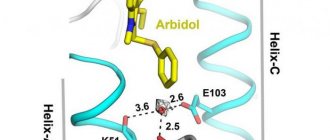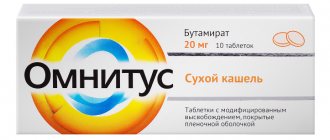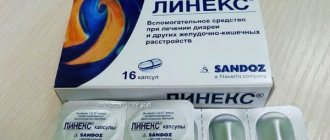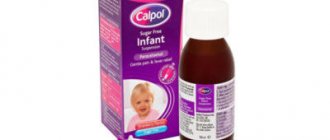Zodak antihistamine drops for children qualitatively eliminate allergy symptoms. This drug does not have a noticeable sedative effect, and therefore the person during treatment remains cheerful and energetic, but gets rid of allergic rhinitis, rashes and other symptoms.
Compound
1 ml of drops contains 10 mg of cetirizine as the main component.
In addition to this, the liquid form of release includes the following inactive ingredients:
- glycerol;
- water;
- E-216; E-218;
- propylene glycol;
- anhydrous acetic acid;
- saccharin;
- E-262.
Each 1 tablet contains 10 mg of cetirizine dihydrochloride.
They contain the following additional components:
- milk sugar;
- maize starch;
- povidone 30;
- Aerosil;
- E-572;
- E-553b;
- E-464;
- E-1521;
- Simethicone
Operating principle
Cetirizine belongs to the competitive histamine antagonists. After oral administration, it suppresses histamine H-1 receptors, relieves allergy symptoms, and also prevents their occurrence. It eliminates itching and spasms of smooth muscles. It reduces the permeability of the walls of small vessels and prevents the appearance of tissue edema.
When taking the medication in therapeutic dosages, it does not cause a sedative effect. The effect of the drug after oral administration begins within an hour and lasts for a day.
Cetirizine has confirmed its effectiveness in clinical trials.
How the drug works
Zodak is distinguished by the fact that the drug takes effect within 20 minutes. After an hour, the patient receives complete relief. Taking one dose, you can have peace of mind throughout the day. This is exactly how long the effect of the drug lasts. After 20 hours after use, the medicine is excreted in the urine from the kidneys . It is important that Zodak does not accumulate even after long-term use, so it does not cause any harm to the body.
That is, the procedure is this: after the drug enters the blood, it moves to the receptors. It influences the symptoms that provoke allergies. The activity is blocked. Negative manifestations weaken and then disappear completely. At this moment, immunity to allergens is formed. Therefore, allergy symptoms disappear: tears stop flowing, the skin does not itch or itch, swelling of the nose and larynx subsides.
Instructions for use
Zodak can be given to a child regardless of food.
During treatment, parents should remember the following:
- You cannot give your child medications containing ethyl alcohol in combination with an antihistamine.
- In combination with Zodak, it is not recommended to take medications that have a depressing effect on the central nervous system.
- If you miss a dose of medication, you should take it as soon as possible, but you should not double the single dosage. Then take the medication as usual.
Instructions for use of drops
Before giving the drops to a child, they must first be diluted in water. The dosage regimen depends on age:
| Age | Dosing schedule |
| 6 months - 1 year | 2.5 mg (5 drops) twice daily |
| 1-6 years | 5 mg (10 drops) once a day or 2.5 mg (5 drops) in the morning and at night |
| 6-12 years | 10 mg (20 drops) once a day or 5 mg in the morning and before bed |
| From 12 years old | 10 mg once a day, preferably before bedtime |
If a child is diagnosed with renal or liver failure, then the dosage should be reduced by 2 times.
Instructions for use of tablets
The tablets should be swallowed whole with water. The treatment regimen depends on the age of the child and the speed of renal blood flow. You need to take the tablets in the following doses:
| Age | Dosages |
| 6-12 years | 10 mg (1 tablet) once a day or 5 mg (half a tablet) twice a day, morning and night |
| From 12 years old | 10 mg (1 tablet) once a day |
In case of kidney pathology, the dosage should be reduced:
| Renal blood flow rate | Doses |
| From 30 to 49 ml per minute | 5 mg per day (half tablet) |
| 10 to 29 ml per minute | 5 mg every other day |
If the child has only impaired liver function, then the dose does not need to be reduced.
Release form
Zodak is available in 3 different types of the drug: tablets, drops, syrup. Zodak drops or syrup form are more suitable for children. The latter option has a banana smell and taste, which makes its intake pleasant and healthy. Adults can choose Zodak tablets, which are more practical: a person, knowing in advance that he may be exposed to an irritant, can take the medicine in any environment. Below is a table of release forms and their features:
| Release form | Qty | External characteristics |
| Syrup | 100 ml, one bottle (5 mg/ml). | The syrup appears transparent, slightly yellow in color. |
| Pills | 5 each; 10; thirty; 60; 90 pcs., blister pack (10 mg). | Biconvex tablets in a white shell of an oblong shape. There is a risk on one side. |
| Drops | 20 ml in a bottle (10 mg per 1 ml). | With a pale yellow tint or without color. |
Contraindications
Regardless of the form of release, Zodak should not be taken by children if they are allergic to its composition.
The medication in drops should be taken with caution in case of moderate to severe kidney dysfunction.
The medicine in tablet form should not be given to children who have the following health problems:
- severe renal failure, when the renal filtration rate is less than 10 ml per minute;
- genetic galactose intolerance;
- lack of lactase;
- impaired absorption of glucose and galactose.
They should be taken with caution if you have problems with the kidneys and liver.
special instructions
Precautions and features of using Zodak:
- While taking Zodak, you need to be careful about drinking alcoholic beverages , although no significant effect was observed between them;
- During the period of therapy, refuse work that is hazardous and requires increased attention;
- There was no recorded effect on driving , since the product does not cause drowsiness;
- Zodak drops can be prescribed for the treatment of patients with diabetes mellitus , since this release form does not contain sugar;
- When calculating the dosage of drops, it should be taken into account that 1 ml of the drug is 20 drops , which corresponds to 10 mg of the active component cetirizine;
- The absence of starch in the composition of the drops , which is used to make the shell for tablets and various flavoring additives and aromas present in the syrup, allows the drops to be used for food allergies to cereals and other products;
- Take with caution in cases of sleep apnea in a patient , the presence of sudden child death syndrome in children of close relatives;
- Children under one year old who were born prematurely must undergo a mandatory examination by a pediatrician before prescribing the drug.
In case of carrying out a skin allergy test for any allergen, stop taking the drug 3-4 days before.
Side effects
Regardless of the form of release, Zodak in children can cause undesirable reactions:
- allergies, which are manifested by rash, itching, Quincke's edema, urticaria;
- dry mouth, upset stomach, stool retention, nausea, abdominal pain;
- headaches, including migraine ones;
- drowsiness, weakness, agitation, dizziness.
The following side effects may occur from taking the pills:
- decreased platelet count;
- impairment of sensitivity and motor activity;
- convulsions, loss of consciousness, trembling of individual parts of the body, dystonia, tic;
- perversion of taste;
- memory problems, memory loss;
- aggression, depression, sleep disorder, disturbance of consciousness, hallucinations, thoughts of suicide;
- runny nose, pharyngitis;
- weight gain;
- increased heart rate;
- increased appetite;
- increased activity of liver enzymes;
- incontinence and urinary retention;
- trembling pupils, weakened vision, impaired accommodation.
Due to exceeding therapeutic dosages, overdose symptoms may appear, such as:
- disturbance of consciousness;
- dizziness;
- impotence;
- headache;
- drowsiness;
- excessive irritability;
- lethargy;
- itching;
- fast fatiguability;
- increased heart rate;
- diarrhea or, conversely, stool retention;
- disturbance of urinary discharge;
- trembling of limbs and other parts of the body;
- dry mouth;
- pupil dilation.
In case of an overdose of Zodak, the antidote is unknown, so symptomatic therapy is prescribed. To remove the drug from the child’s body, he is prescribed an enterosorbent, for example, Smecta.
Pharmacological group
Zodak drops for children belong to the 2nd generation antihistamine group of drugs.
Pharmacodynamics
The active ingredient, cetirizine dihydrochloride, selectively blocks peripheral H1-histamine receptors and competes with the effects of histamine. This leads to the elimination of an allergic reaction in the body and an improvement in general condition. The drug substance reduces the activity of eosinophils and basophils in the skin and mucous membranes, which prevents allergic damage to the eyes, upper respiratory tract, and skin.
In therapeutic age doses, Zodak prevents the development of seasonal and atopic rhinitis, conjunctivitis, bronchial asthma, urticaria, allergic dermatitis, and eczema. Cetirizine has an anti-edematous and anti-inflammatory effect, improves airway patency, reduces the formation of inflammatory discharge from the nose and eyes, prevents skin rashes, and soothes itching and itching.
Pharmacokinetics
Zodak drops are intended for oral use. After entering the digestive tract, the drug is absorbed in the stomach, penetrates into the general bloodstream (systemic action), and binds to transport proteins in the blood by 93%. In clinical trials, no effect of cetirizine on the combination of warfarin with transport albumins was revealed. The maximum concentration of the drug in the blood plasma is achieved after 30-90 minutes. The rate of absorption is affected by the use of drops with food. Taking with food prolongs the rate of absorption, but does not affect the concentration of the drug in the blood plasma.
Cetirizine is largely not metabolized in the liver. The drug is excreted by the kidneys 2/3 unchanged. No accumulation of cetirizine in the body was detected. Violation of the pharmacokinetics of the drug develops in renal failure. When creatinine clearance is less than 10 ml/minute, cetirizine is not excreted and has a toxic effect on organs and tissues. The half-life of the drug from the body in children is 3 hours, in adults on average 10 hours.
Analogs
Analogues of Zodak are available for sale:
- Zyrtec;
- Suprastin;
- Fenistil;
- Erius;
- Suprastinex;
- Cetrin;
- Diazolin;
- Loratadine.
Zyrtec or Zodac: what to give your child?
Zyrtec is an original drug produced in Switzerland, the therapeutic effect of which is explained by cetirizine. It is commercially available in drops and tablets. The drug should not be given in liquid form to children under six months of age. Tablets are prohibited for patients under 6 years of age. Zyrtec, regardless of the form of release, is contraindicated in cases of severe renal failure, and in case of epilepsy and a predisposition to seizures, it should be taken with caution.
There are no other significant differences between the two products.
Overdose
A clinically significant overdose is registered when the therapeutic dose is exceeded by 5 or more times. Against the background of an overdose, pathological symptoms from the central nervous system develop: increased excitability is replaced by drowsiness, stupor, hand tremors, headache, confusion. On the part of the digestive system, spasmodic pain in the abdomen and diarrhea are observed, on the part of the cardiovascular system - tachycardia (increased heart rate), urination - urinary retention. In case of overdose, gastric lavage is performed and symptomatic therapy is prescribed. Zodak drops do not have an antidote (a substance that neutralizes the negative effect of the drug).
Suprastin or Zodak?
The therapeutic effect of Suprastin is explained by chloropyramine. In the pharmacy it comes in tablets and injections, which can be given to children older than one month with various types of allergies, especially those accompanied by skin manifestations. The medication is contraindicated in case of intolerance or an attack of bronchial asthma. Its main difference from Zodak is that Suprastin very often causes a pronounced sedative effect.
It is not very correct to compare these two antiallergic drugs, since they have different compositions, contraindications and undesirable effects.
Interaction with other means, storage
No negative interactions of Zodak with other medications have been identified. But doctors do not recommend using it in parallel with other antiallergic drugs without indications.
The drop is stored in a place protected from sunlight, out of reach of children (the protective mechanism on the lid must be closed until it clicks). The optimal storage temperature is 20 C. The shelf life of the therapeutic effect of the drug is 3 years from the release date indicated on the packaging.
The price of drops is from 190 rubles.
Erius or Zodak?
The therapeutic effect of Erius is explained by desloratadine. The drug is sold in syrup, regular and absorbable tablets. In liquid form, Erius is allowed for patients who are six months old, lozenges are allowed from 6 years old, and coated tablets from 12 years old.
The drugs have common indications, but they have different contraindications and side effects, so the doctor must decide which one is better.
Useful video about allergy medications
List of sources:
- Balabolkin I.I. Current problems of childhood allergology at the present stage // Pediatrics. – 2012. – T. 91, No. 3. – P. 69–75.
- Kondurina E. G., Zelenskaya V. V. Antihistamines in the control of atopic diseases in children // Breast Cancer. – 2012. – T. 20, No. 2. – P. 56–57.
- Gushchin I. S. Prospects for improving the antiallergic action of H1-antihistamines // Attending physician. – 2009. – No. 5.
- Emelyanov A.V., Kochergin N.G., Goryachkina L.A. History and modern approaches to the clinical use of antihistamines // Clinical dermatology and venereology. – 2010. – No. 4. – P. 62–70.
- Tuzlukova E. B., Ilyina N. I., Luss L. V. Antihistamines // Russian Medical Journal. – 2002. – T. 10, No. 5. – P. 269–272.
- Church M., Maurer M., Simons F. et al. Risk of first-generation H1-antihistamines: a GA2LEN position paper // Allergy. 2010. No. 65. R. 459–466.
Author
Yulia Dmitruk
Pharmacist
She graduated from the Shepetivka Medical School, majoring in pharmacy. Work experience in the specialty – 3 years. Married, has two children.
Share
Diazolin or Zodak?
Diazolin contains mebhydrolin as a medicinal component. The medicine is commercially available in pills and tablets produced by various companies. Therefore, the age at which it can be used must be clarified in the official instructions, since it differs depending on the manufacturer. Typically, Diazolin in a dose of 50 mg can be taken from 3 years of age. This antihistamine is recommended for a runny nose of allergic origin, hay fever, and allergic skin reactions.
The drugs Diazolin and Zodak differ in composition, contraindications and side effects, and the doctor must decide which one is better for each child individually.
Reviews
Parents' opinion
On the Internet you can find many positive reviews from mothers and fathers about the drug Zodak. Parents like the following about it:
- dosage frequency: 1 time per day;
- the drops have a pleasant taste;
- cheaper price compared to the original drug Zirtec.
Negative reviews are due to the fact that Zodak can cause allergies.
Doctor Komarovsky's opinion
If an allergy develops, Evgeniy Olegovich advises to exclude the child from contact with the allergen. When this is not possible, to stop the allergic reaction, he recommends taking antihistamines, which should only be selected by a doctor.
Despite the fact that the antiallergic drug is an over-the-counter drug, it must be prescribed by a doctor who will tell you how to give Zodak to a child.
By
